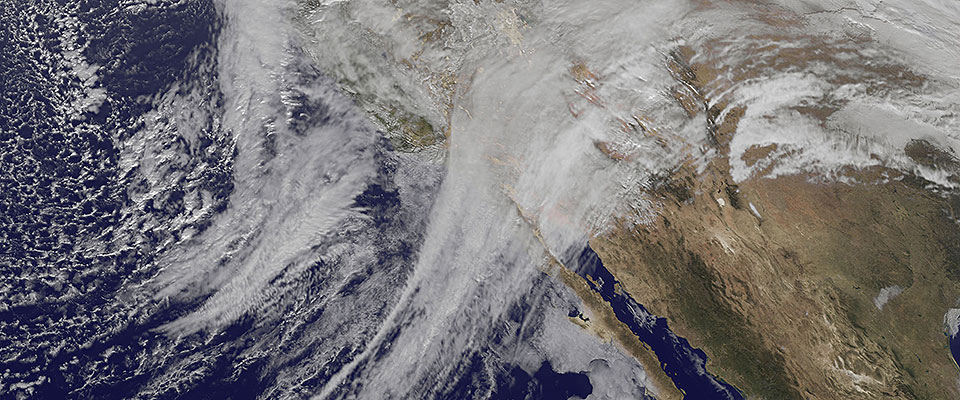Veränderte Jet Streams

Jet Stream über Kalifornien von NASA Goddard Space Flight Center
Climate change is affecting the jet stream so that extreme weather is more likely to persist for longer periods
The idea is that climate change doesn't merely increase the overall likelihood of heat waves, say, or the volume of rainfall - it also changes the flow of weather itself. By altering massive planet-scale air patterns like the jet stream, which flows in waves from west to east in the Northern Hemisphere, a warming planet causes our weather to become more stuck in place. This means that a given weather pattern, whatever it may be, may persist for longer, thus driving extreme droughts, heat waves, downpours and more.
The study, its authors write, "adds to the weight of evidence for a human influence on the occurrence of devastating events such as the 2003 European heat wave, the 2010 Pakistan flood and Russian heat wave, the 2011 Texas heat wave and recent floods in Europe."
The Northern Hemisphere jet stream flows in a wavy pattern from west to east, driven by the rotation of the Earth and the difference in temperature between the equator and the North Pole. The flow is stronger when that temperature difference is large. But when the Arctic warms up faster than the equator does - which is part of the fundamental definition of global warming, and which is already happening - the jet stream's flow can become weakened and elongated. That's when you can get the resultant weather extremes.